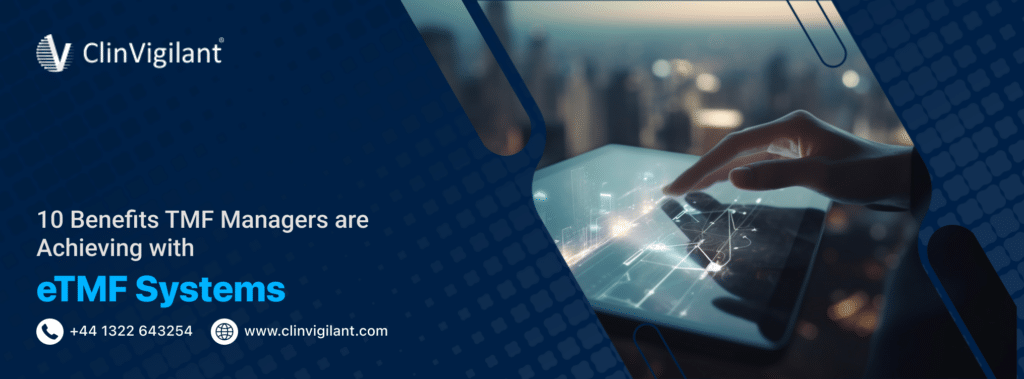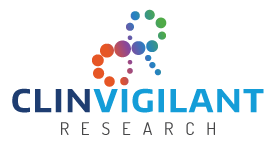
Electronic trial master file in clinical research systems provide numerous benefits for TMF managers over traditional paper-based systems. Key advantages include improved collaboration through easy sharing of documents digitally across sites, CROs, and IRBs/IECs; significant time and cost savings from faster document searching, reduced printing/courier costs, and improved efficiency; enhanced quality control and inspection readiness thanks to centralized organization of all essential documents with tracking of document statuses; better visibility into key trial metrics for data-driven decisions on study progress; and overall increased TMF SOP compliance.
Additional major gains come from the ability to reuse standardized TMF structures and templates to streamline future trials. In summary, eTMF’s transform cumbersome paper-based processes into efficient digital systems for managing essential trial documents, saving time and money while enabling collaboration and ensuring inspection readiness. The organizational impact is reduced burden, increased study capacity, and more trials enabled.
Benefit 1. Real-Time Tracking & Viewing of Documents
One of the biggest benefits TMF managers report after implementing an eTMF system is the ability to track and view documents in real-time across all participating sites. With traditional paper TMFs, there can be long lag times between when a document is generated or executed at a clinical trial site and when it actually makes its way to the central TMF managed by the sponsor. This time lag hampers the ability of sponsors to have current insight into trial execution status.
eTMF systems solve this problem by providing instantaneous access to executed documents directly from the site source. As soon as a document is completed and scanned or uploaded to the eTMF, managers have immediate availability to view that document from the central eTMF. This real-time tracking and visibility into site documentation is instrumental in enabling sponsors to identify potential issues early before they undermine trial data quality or integrity.
Benefit 2. Easier to Search & Find Documents
Paper TMFs make finding documents like searching for a needle in a haystack, while eTMF systems include powerful search functions that make documents easily discoverable. TMF managers can quickly search and filter by attributes like document type, site name, protocol number, or date range to instantly find the document they need.
This improved searchability leads to significant time savings that allows managers to focus on more value-added oversight versus mundane administrative tasks. Easy access to documents also minimizes unproductive requests to sites for documents that may be on-hand but difficult to locate in paper files.
Benefit 3. Shortened Clinical Trial Time
By enhancing oversight and document accessibility, eTMF systems enable sponsors to accelerate overall etmf clinical trials timelines. Two areas where dramatic time savings are being achieved are study start-up and close-out.
Speeding Up Study Start-Up
Getting sites initiated is one of the most document-intensive processes of a clinical trial. With an eTMF in clincial research, managers have instant visibility into site activation document status and can proactively flag missing items to sites. This level of oversight is extremely difficult to achieve with paper TMFs where documents are decentralized across sites. By identifying and resolving document issues early, sites can be activated faster for enrollment.
Speeding Up Study Close-Out
At the end of a trial, thousands of documents must be pulled together, reviewed, reconciled, and processed before databases can be locked and trial data can be extracted for analysis. eTMF systems help close studies faster by providing managers better document visibility and oversight through the close-out process versus chasing down documents from disparate paper files.
Benefit 4. Easier Collaboration with IRBs/IECs
Maintaining proper ethics committee oversight is an integral part of managing clinical trials. However, efficiently collaborating with IRBs/IECs can prove challenging using paper processes. eTMF systems facilitate easier IRB/IEC collaboration by allowing instant access to the most current approved documents and amendments.
Rather than awaiting approved documents in the mail or managing multiple document versions, IRBs/IECs can directly access final approved documents in the eTMF. This saves substantial administrative effort over the course of a trial and ensures proper version control.
Benefit 5. Increase TMF SOP Compliance
A critical responsibility of TMF managers is ensuring adherence to TMF standard operating procedures that enforce best practices around content, compilation timeliness, indexing standards, access controls, and tracking. However, monitoring and proving compliance to TMF SOPs can be near impossible with paper-based TMFs. eTMF systems provide tools to systemize these policies and prove adherence.
Timeliness of TMF Compilation
eTMF systems track and report on metrics like document upload lag times against internal SOP policies. Alerts notify managers of documents in danger of becoming overdue. This transparency allows for targeted follow-up to ensure documents are compiled in a timely manner per SOPs.
Tracking & Accountability of TMF Content
Detailed audit logs provide immutable proof of Trial Master File access, uploads, changes, etc. These system logs replace manual sign-in sheets to validate appropriate access controls to confidential documents are maintained. Uploads and edits are tracked to user profiles to maintain accountability over TMF content.
Benefit 6. Better Visibility into Key Trial Performance Metrics
In addition to housing documents, leading eTMF solutions provide integrated access to key trial metrics that allow managers to assess study health and performance. Examples include enrollment metrics, query volumes, safety reports, and more – all accessible within the same eTMF interface.
This convergence of study metrics and documentation provides managers a holistic overview of trial status faster than toggling between disparate systems. Just as trial sites are selected based on demonstrated performance, underperforming trials can be identified earlier and addressed when operational insights reside alongside documentation.
Benefit 7. Cost Savings
Between reduced administrative expenses, accelerated timelines, and fewer sponsors staff required to manage documentation, eTMF systems enable significant cost savings for sponsors and CROs.
Analysts estimate over $100,000 per trial can be saved in direct costs when transitioning from paper to eTMF systems. Even more impactful are the indirect savings achievable through faster trials and accelerated access to decision data after trial completion.
Benefit 8. Easier Collaboration with Sites
Managing communications and collaboration with global investigational sites is a core TMF responsibility. However, efficiently sharing documents and information across sites can be burdensome using paper and manual processes.
eTMF systems provide tools to streamline site collaboration such as annotations allowing back and forth commentary directly on files and instant notification alerts when new documents become available for their review. Sites also benefit from mobile access to documentation, saving administrative workload shuffling paper files.
Benefit 9. Improved Audit & Inspection Readiness
Confidence in always being audit and inspection ready is the top priority for most TMF managers. However, when documentation is scattered across paper files and systems, there is inherent exposure during regulatory reviews.
eTMF systems minimize this risk by centralizing content into a single, searchable repository providing inspectors an easy pathway to documentation. Superior organization, oversight, and collaboration tools also facilitate faster responses to regulator queries.
Benefit 10. Easier Collaboration with CROs
Over 65% of trials leverage CRO resources making efficient collaboration critical. However, managing collaboration across sponsors and multiple CROs with distinct IT landscapes can be extraordinarily complex using manual document exchange processes.
Leading eTMF solutions include tools to streamline CRO collaboration such as configurable access permissions and file segregation options to securely limit exposure to confidential documents on an organization by organization basis. This allows the flexibility needed to closely govern documentation access across diverse partner groups.
The Future: The Convergence of Clinical Data
As the industry experiences broader EDC, CTMS, and ePRO system adoption, the volume of regulated content outside of the TMF continues to grow exponentially. This data sprawl makes gaining a unified view of trial operations increasingly difficult.
Leading eTMF solutions seek to solve this problem by providing integrated access to EDC, CTMS, and other source system data directly within the eTMF interface. This allows managers a central point to access all regulated content – both documents and data.
By breaking down data silos, this convergence of clinical information promises to provide managers unprecedented visibility to operate trials more efficiently and with less risk.
The Takeaway
The operational challenges facing TMF managers continue to compound as trials become more complex and document volumes explode across globally dispersed programs. eTMF solutions provide tools to regain control through superior document oversight, collaboration, and organizational capabilities.
With average implementation costs under $100K and hard dollar savings radically eclipsing upfront expenditures, rapid ROI is achievable. More impactful yet are the “soft” benefits from accelerating trials, minimizing compliance risks, and converged data visibility that enables proactive oversight into trial health.
As adoption continues gaining momentum, eTMF systems promise to transition from nice-to-have technology into essential infrastructure required to viably operate trials in the future.

